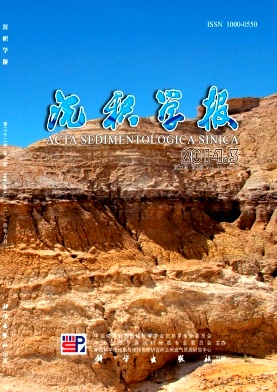Characteristics of Deep-water Depositional Systems on the Northwestern Margin Slopes of the Northwest Sub-Basin, South China Sea
- Received Date: 2013-07-28
- Rev Recd Date: 2013-11-30
- Publish Date: 2014-06-10
-
Key words:
- deep-water depositional /
- system /
- bottom current /
- contourites
Abstract: During recent years, the study of deep-water depositional systems has intensively attracted worldwide interests. Deep-water sediments can record plentiful paleoceanographic information, e.g., changes of climate and/or ocean circulation conditions, which is of crucial importance for paleoceanographic reconstructions. However, in and abroad studies involving deep-water sedimentary systems of the Northwest Sub-Basin in the South China Sea is rare. In this study, we analyzed high resolution 2-D seismic data that cover an area of >4 200 km2, with the total length of >1 500 m. It reveals that there are mainly three deep-water depositional systems developed on the northwestern margin (water depth > 1 000 m) of the Northwest Sub-Basin, South China Sea. (1) There is a seamount named South Shenhu Seamount standing on the gentle slopes of the Pearl River Mouth Basin Southern Uplift Zone, where the water depths range from 1 000 m to 1 500 m and the slope is gentler than 1.2°. A “seamount related contourite depositional system” that consists of a moat (the depression close to an obstacle, produced by separate and faster bottom current cores and in genetic relation with mounded and elongated separated drifts), a mounded-elongated drift (typical type of contourites, which are mounded and elongated in shape along the slope, associating with moats), a plastered drift (produced by bottom currents with weakened dynamics due to topographic changes), contourite channels (alongslope aliened erosive features that are produced by bottom currents) and contourite furrows (alongslope aliened erosive features generate by bottom currents, with incisions of < 10 m) has been discovered developing in the vicinity of the South Shenhu Seamount. The moat runs along the northern foot of the seamount, with a mounded-elongated drift developed to its north side and a plastered drift to the south (plastered onto the northern flank of the South Shenhu Seamount). Alongslope aliened contourite furrows and channels developed on the mounded-elongated drift deposits. (2) Landslidings dominate the steep slopes (>2°) between 1 500 m and 2 500 m in the south of the South Shenhu Seamount, where gravity flow slump deposits and submarine canyons compose the “gravity flow slump system” and the “canyon system”, respectively. An NNW-SSE oriented canyon (C.1) shows an asymmetric V-shaped morphology with ~140 m of incision and ~6.5 km in width on the mid-upper slope (~1 350 m in water depth and ~1°slope). The successive erosion bases within this canyon present an obvious ENE migration. Contourite deposits, however, are rare in this region. (3) On the northwestern lower slopes of the Northwest Sub-Basin (water depth >2 500 m and slope < 2°, canyons are still common. On slopes of ~1 790 m in depth and ~2° of slope, a canyon (C.2) shows a flat-bottomed and U-shaped morphology (~135 m of incision and ~4 km in width), with a slightly mounded aggradational levee-system developed on both flanks of the canyon. The levee sediments on the WSW side of the canyon show continuous wave-shaped reflectors but flat and parallel/sub-parallel reflectors on the ENE side. The development of gravity flow slump deposits are significantly reduced in this region, instead, contourite sheeted drifts (contourites deposited across continental margins where a gentle gradient and smooth topography favor a wide non-focused bottom current) compose the sheeted contourite depositional system. The “seamount related contourite depositional system” is suggested to be generated by the anticyclone intermediate water circulation of the South China Sea. To the north side of the South Shenhu Seamount, bottom currents from west to east would be intensified after being deflected by an obstacle (the presence of the seamount). Thus the bottom current intensity is high and can erode the slope to form a moat. Due to Coriolis deflection, a mounded drift developed to the north of the moat and a small plastered drift to the south (plastered onto the northern flank of the South Shenhu Seamount). Currents away from the seamount are less/non-intensified, generating normal contourite channels and furrows on the drifted deposits north of the moat. Downslope gravity flow activities dominate steeper slopes, where the depositional environment is unsteady thus alongslope contourite deposits are missing. However, the eastward migrating downslope canyon of C.1 may indicate consistent bottom currents flowing from west to east, with intense dynamics. These high velocity currents might also belong to the intermediate water circulation. On gentle and flat slopes, e.g., the bathy plain, sheeted contourite deposits are commonly developed under the control of unfocused and low velocity bottom current in deep layer. The “sheeted contourite depositional system” in the studied area, thus, is proposed to be generated by unfocused bottom currents within the westwards South China Sea deep water circulation. Furthermore, sediment waves and aggradational levees are taken place on flanks of the canyon at the deeper depths, e.g., C.2, which suggests a dominated mechanism for their origin to be overflows of turbidity currents. Indicated from the first channelized features of consistent contourite channels on seismic reflections, the stable development of the contourite depositional system in the study area could be traced back to ~10 Ma, when local SCS bottom currents initially formed. In agreement with the general transgressional pattern in the northern margin area of the SCS,the followed contourite depositional system developed an aggradational pattern. This study provides new data for further understanding how the environmental factors, e.g., seafloor topographies, sea level/climate changes, tectonic activities and sediment sources, influencing the evolution of the SCS deep-water depositional systems.
| Citation: | Characteristics of Deep-water Depositional Systems on the Northwestern Margin Slopes of the Northwest Sub-Basin, South China Sea[J]. Acta Sedimentologica Sinica, 2014, 32(3): 442-449. |






 DownLoad:
DownLoad: